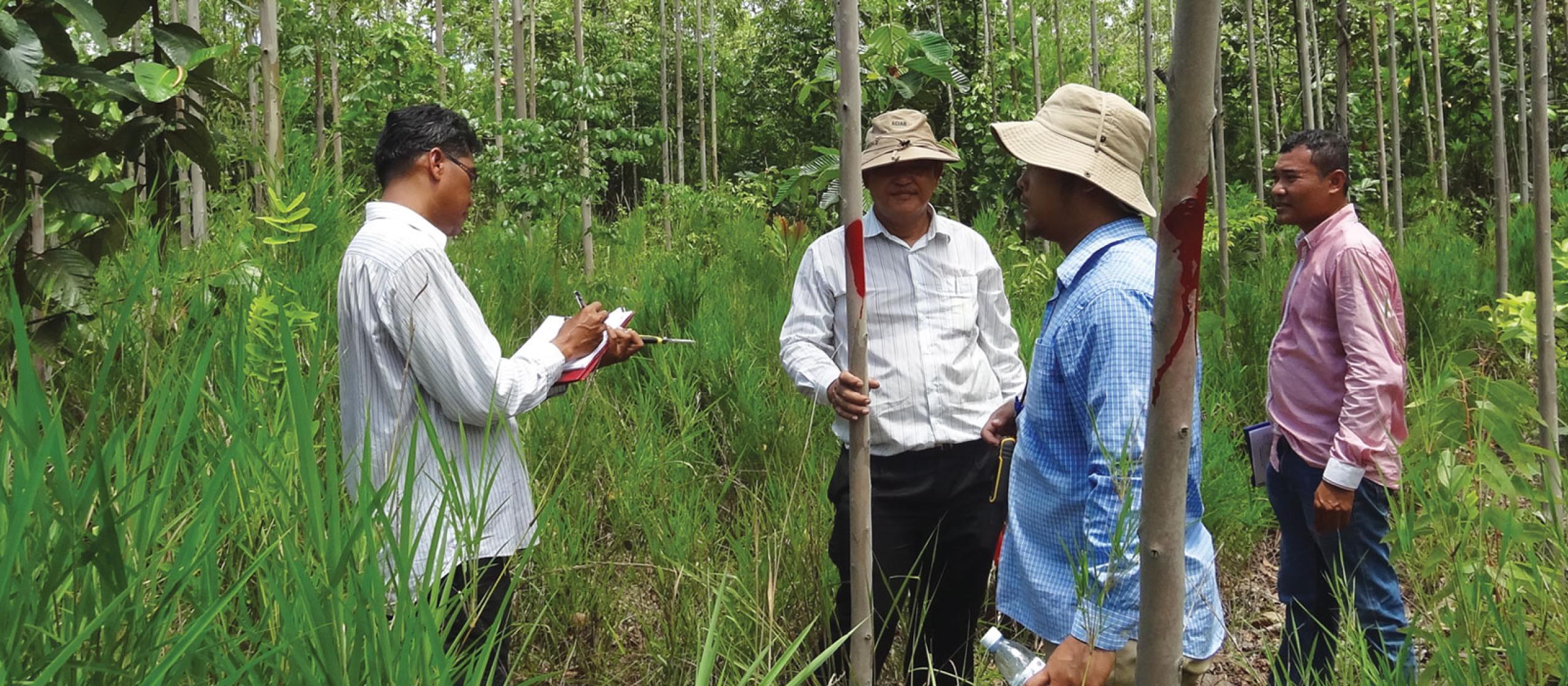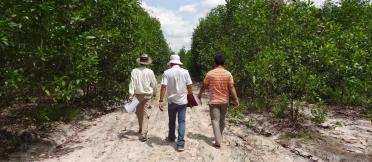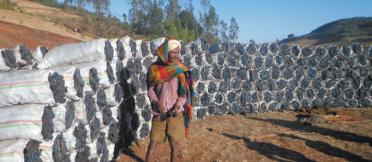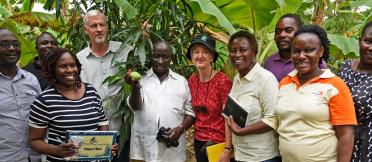Diagnostics has been central to an ACIAR-supported project in Ethiopia, where the introduced Australian Acacia mearnsii has established itself as a species of significant ecological, economic and social importance. In recent years, it has been devastated by a disease that has wiped out smallholder plantations.
Dr Nora Devoe, ACIAR Research Program Manager, Forestry, said when the outbreaks were reported in 2021, ACIAR initiated a project to help local organisations identify what they were dealing with to better plan their response. This project was also led by Associate Professor Lawson and Dr Healey.
‘We were contacted by our colleagues in Ethiopia who said there’s some disease happening and it’s almost decimated the whole value chain of acacia,’ said Dr Healey. ‘That includes the farmers who grow it, to the people who use it for charcoal production, to the transport workers who transport the charcoal, to women who now have to walk much further to try and find firewood.’
In Ethiopia, Acacia mearnsii has become known as ‘black gold’ or ‘black sesame’ due to its many uses, as forage feed for livestock, as charcoal and fuel wood, and as a soil improver that helps to fix nitrogen. It also provides local economic and job opportunities, reducing the need for regional migration.
After being introduced from Australia in the 1990s, it grew relatively untroubled for many years, before its pests and diseases also began to find their ways to Ethiopia.
While trying to identify the disease, researchers also realised that the imported tree species had been misidentified as Acacia decurrens. Through collaboration between the Ethiopian Environment and Forest Research Institute, and the Forestry and the Agricultural Biotechnology Institute, based in South Africa, it was re-identified as Acacia mearnsii. This helped to diagnose the disease as Uromycladium acaciae, a type of wattle rust.
Associate Professor Lawson said the next steps for Ethiopia will include biosecurity initiatives to prevent the spread of disease and assessing management options in affected areas, along with preparation of management strategies to counter other invasive pests and pathogens.






